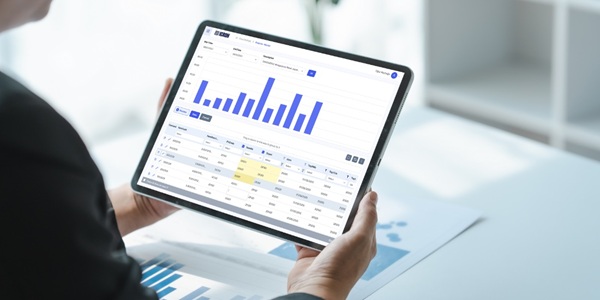
Author: Z. Caner Taşkın
Chances are your organization has invested significantly in data collection, management, and analysis – most supply chain companies in today’s Industry 4.0 era have pumped serious money into tools to help them improve in these areas.
What’s the outcome of these investments? First of all, most companies today produce and compile a massive amount of data from various business functions (sales, finance, marketing, production, logistics, etc.) and from various sources including back-office systems (ERP, MES, Excel, etc.) and IoT devices. In fact, present-day supply chain companies are absolutely drowning in data!
But are these companies actually able to process and analyze all this data and utilize it to fuel better business decisions and bottom-line results?
Different types of analytics
Most supply chain companies do have the capability to extract insights on past performance and current operating conditions from their data – we call this “descriptive analytics”. Using historical and real-time data, they can generate statistics and reports – from which they can identify trends and glean insights (on what happened in the past and what is happening in the present).
Without a doubt, descriptive analytics tools can offer supply chain companies a valuable snapshot of the past and present state of their business. In some cases – employing techniques such as drill-down and data mining – it is possible to take this data analysis a step further, enabling companies to diagnose the root causes of their performance.
But – as past performance is not necessarily a reliable indicator of future results – using descriptive analytics tools alone to create plans and make business decisions is not advisable.
To be able to transform data into optimized plans and decisions, supply chain companies must invest in algorithm-based technology that supports not only descriptive analytics, but also predictive and prescriptive analytics.
Predictive analytics tools – as the name suggests – utilize historical and current data to make predictions about the future. Employing techniques such as statistical forecasting and machine learning algorithms, predictive analytics allow a company’s planners and key stakeholders to use data on their past performance to extrapolate and gain an understanding of the future (including market and industry trends, customer behaviors and demand patterns, and company growth, constraints, and profitability).
Predictive analytics delivers data-driven, actionable insights on likely future conditions – based on probabilistic statistical models and forecasting – which can be used to help shape and guide strategic, tactical, and operational plans and decisions.
As you may have guessed from their name, prescriptive analytics tools often use mathematical programming solvers to generate a “prescription” that tells a company which are the right decisions to make and actions to take to reach their business goals. Prescriptive analytics tools are rapidly growing in popularity. IDC forecasts that the predictive analytics software market, which totaled US$3.1 billion worldwide in 2017, will increase at a five-year CAGR of 9.4%.
Prescriptive analytics employ optimization and heuristic algorithms to instantly process historical, real-time, and forecasted data in order to not only predict future outcomes, but also provide recommendations (based on past, present, and future business conditions and constraints) on which decisions to make and actions to take to capitalize on future opportunities and mitigate risks.
For supply chain companies, prescriptive analytics can optimize the decision-making process, offering invaluable advice on what is the best decision and course of action – to achieve specific business goals and objectives – in any circumstance.
What is the right approach for your company?
So which data analytics approach – descriptive, predictive, or prescriptive – is right for your company? Which will enable you to unlock the true business value of your data?
The answer is: all three – ideally in a single, unified, and automated software environment.
Best-of-breed intelligent supply chain planning and optimization solutions – like ICRON – run a whole host of advanced algorithms that support descriptive, predictive, or prescriptive analytics and enable companies to achieve the highest levels of data integration, visualization, analysis, and utilization.
Supply chain companies can only begin optimizing their data if they can analyze and utilize it in an integrated environment that supports descriptive, predictive, and prescriptive analytics capabilities.
With ICRON’s robust analytics engine, supply chain companies can discover the true power of their data by using it to gain insights, make predictions, and generate recommendations that drive optimized business decisions and improved bottom-line results.
If you would like to see ICRON in action, please contact us. If you have enjoyed this blog, you can find more content that you might enjoy here.













